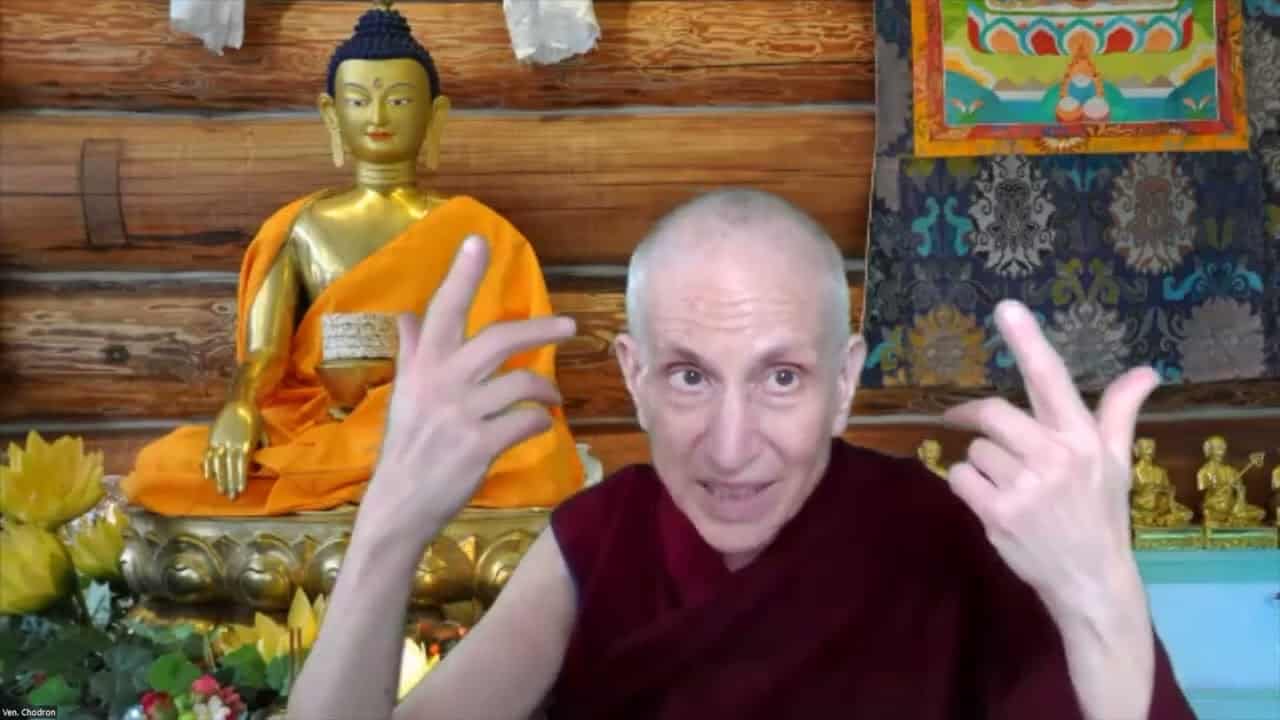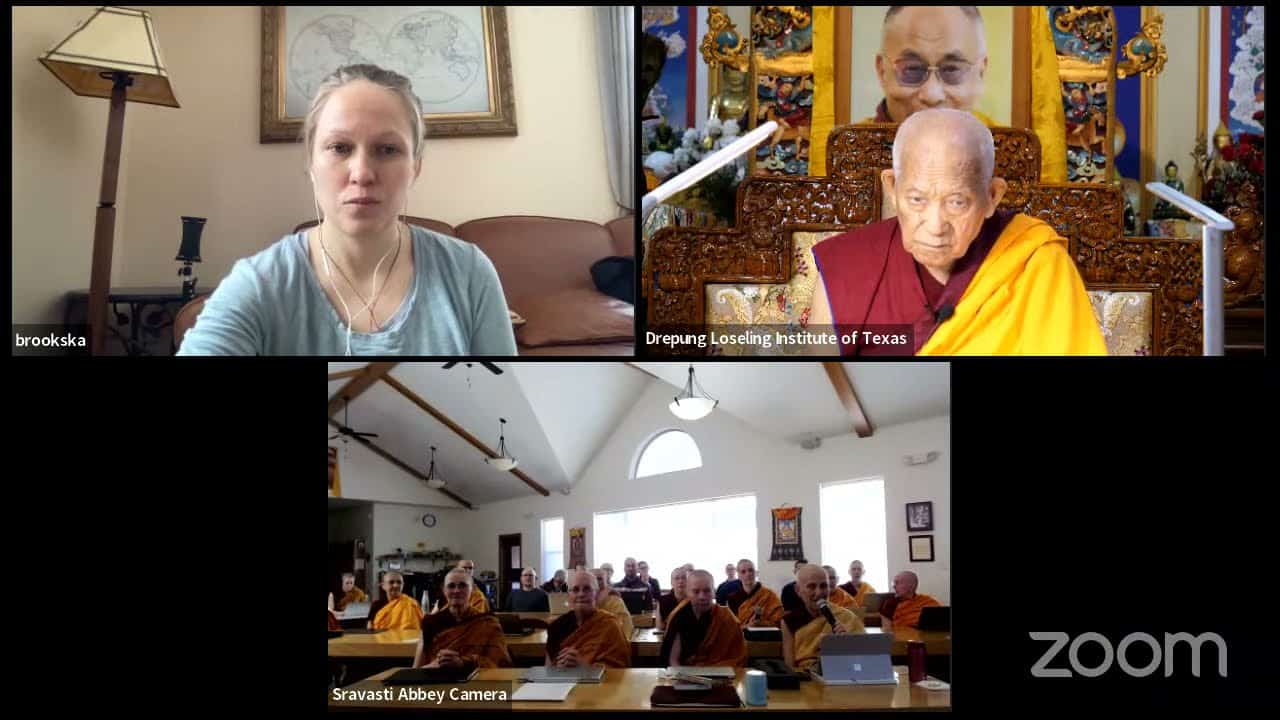Name and form
48 Samsara, Nirvana, and Buddha Nature
Part of an ongoing series of teachings (retreat and Friday) based on the book Samsara, Nirvana, and Buddha Nature, the third volume in The Library of Wisdom and Compassion series by His Holiness the Dalai Lama and Venerable Thubten Chodron.
- Third link consciousness according to Pali tradition
- Rebirth linking consciousness
- Like an echo, a light, a seal impression or a shadow
- Not same or not unrelated from one life to another
- Five omnipresent mental factors
- Co-nascent and mutual conditions
- Fourth link name and form
- Name refers to the four mental aggregates
- Examining what is the experience of pain or pleasure
- Four great elements earth, water, fire and air
Samsara, Nirvana, and Buddha Nature 48: Consciuosness (download)
Contemplation points
- The text describes third link consciousness as “an echo, a light, a seal impression, or a shadow; it does not come here from the previous life yet it arises due to causes in previous lives.” Take some time with this. Consider how the consciousness is not something fixed; you can’t pin it down into something concrete.
- What is the role of consciousness according to the Pali tradition?
- Consider: We talk about physical pain, but the head without the presence of consciousness does not hurt. A corpse doesn’t have a headache. So what is it that actually experiences the pain of the headache? Where does the headache exist? What is apprehending it?
- Similarly, contemplate pleasure. Where is the pleasurable experience after, for example, a meal. Where is the pleasure? Is it in the stomach? In the mind? And what is it? Is it something mental or physical?
- To what do name and form refer when talking about the fourth link?
- Consider the clinging attachment you have for your body and mind and how that drives you to create karma and take additional rebirths. Start with gross things, for instance, how you look (start with your hair, your teeth, your skin). We are also attached to our intelligence and our talents. Investigate these deeply. What is it that we are really attached to? Make specific examples from your experience.
Venerable Thubten Chodron
Venerable Chodron emphasizes the practical application of Buddha’s teachings in our daily lives and is especially skilled at explaining them in ways easily understood and practiced by Westerners. She is well known for her warm, humorous, and lucid teachings. She was ordained as a Buddhist nun in 1977 by Kyabje Ling Rinpoche in Dharamsala, India, and in 1986 she received bhikshuni (full) ordination in Taiwan. Read her full bio.


